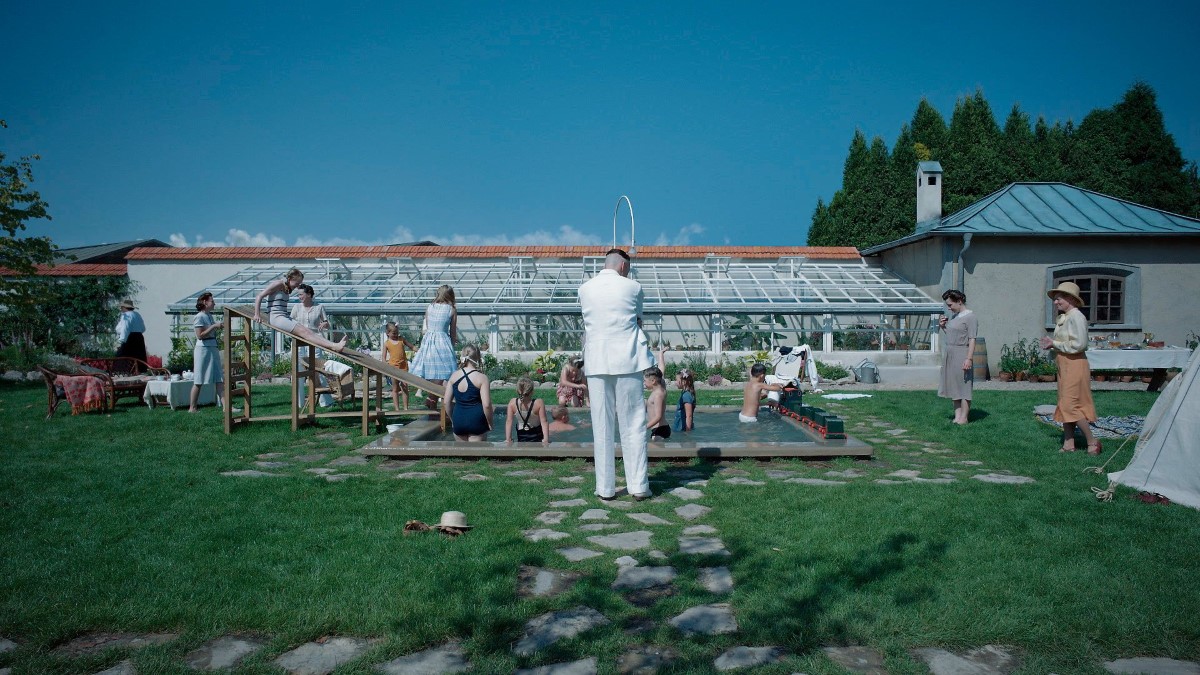An Aryan utopia defined within a geometric perimeter, bright and separated by barbed wire from the horrific chaos of darkness. This is how the Interessegebiet – translated into English as The Zone of Interest – was referred to by the SS to denote the Auschwitz surroundings. The idyllic pretense perpetrated by the camp commander Rudolf Höss, his wife Hedwig, and their five children stands in stark contrast to the tragic reality of history.
Loosely inspired by Martin Amis’s 2014 novel of the same name, The Zone of Interest marks the fourth feature film by Englishman Jonathan Glazer and his masterpiece to date. Winning the Grand Prix at Cannes and various other awards, it is undoubtedly the frontrunner to triumph as the best foreign language film at the upcoming Oscars.
The precision of the native language of the exceptional German actors – Christian Friedel and Sandra Hüller – as well as the Polish location for the shooting belong to the (meta)physical fidelity of the film project, to its conceptual organicity organized on an audio-visual narrative space based on abstraction to stage the paradoxical denial of evidence. Despite being surrounded by chilling noises of gunshots, screams, barking dogs, the Höss family seems indifferent, deaf, activating an instant removal of reality, precisely denial as a mirror of a mindset and psychic form aimed at self-survival. Almost a counter-aesthetic to Làszló Nemes’s Son of Saul, where everything starts from within, in Glazer’s film everything is external, in the sound space or off-screen, made visible only by the iconic watchtower of the camp or perceived as a fairy tale/nightmare through infrared shots.
The rhetorical dichotomy of inversion, overturning, and manic repetition of the “our” characters’ household gestures, showcased in the clear and florally chromatic cleanliness by the talent of cinematographer Lukasz Zal, becomes here a symbolic, political, and historical as well as artistic gesture: a surgical, radical, and relentless look realized by ten fixed cameras to provoke the unconscious, extracting unease in its both subliminal and absolute degree. In this way, Glazer “resolves” the unrepresentable par excellence, the banality of evil, thus placing himself among the most courageous and original authors in the Auschwitz-movie genre.
If the first part of the film is a manifesto of the paradox mentioned above, the second part tends to anticipate its consequences, focusing on the aesthetics of paranoia: noises grow louder, the light turns red, and finally, a family member visiting Hedwig’s daughter in her enchanted Eden – Hedwig’s mother – realizes what is happening beyond the Garden of Earthly Delights, choosing to flee. The descent into hell becomes manifest and now Rudolf, from the Berlin power palaces where he is temporarily transferred, is forced to see the unbearable: a camera gaze, through a hole what has been and will be, and then – inexorably – the blinding black of darkness.
Anna Maria Pasetti
Il Fatto Quotidiano, February 24, 2024





